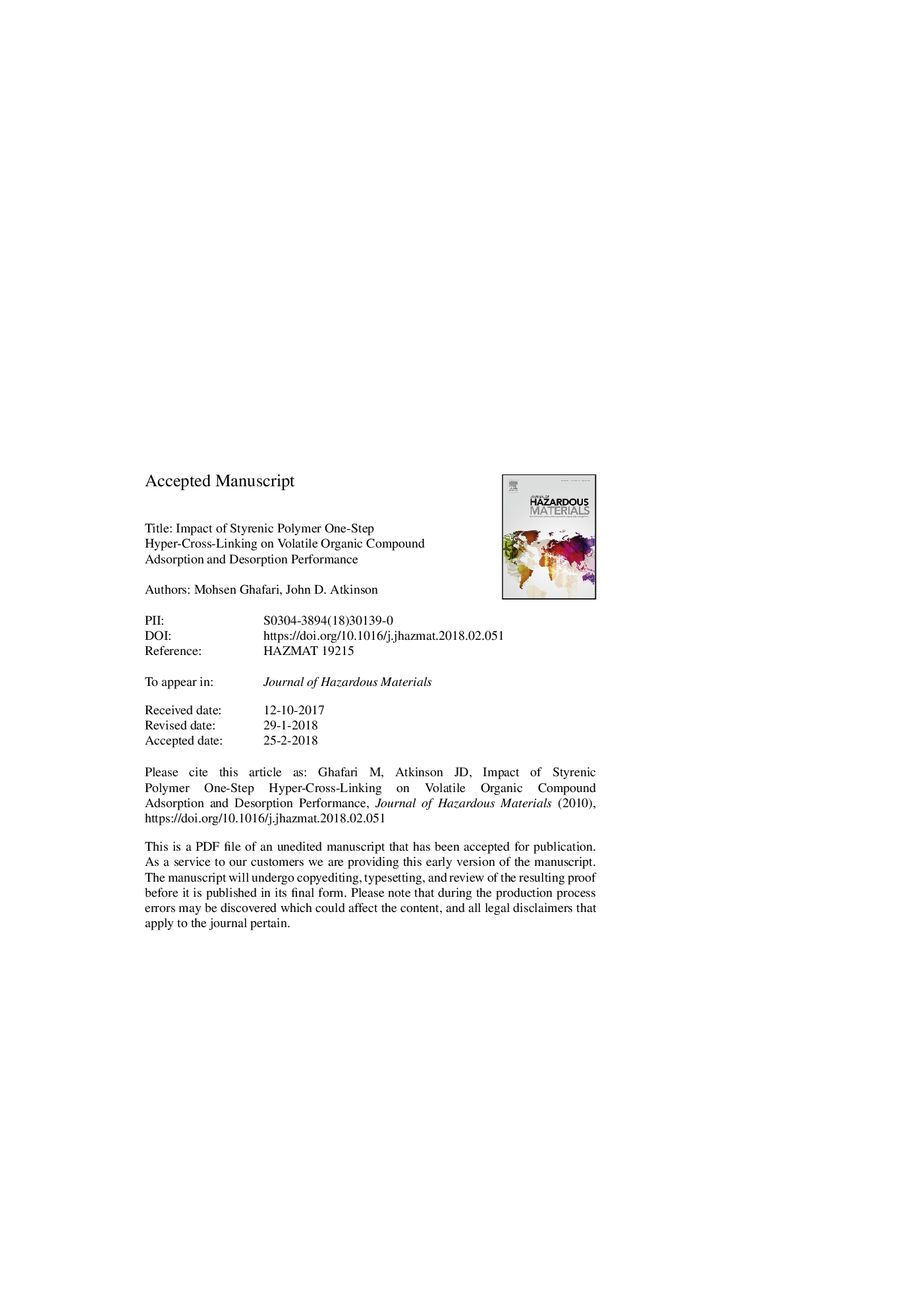| کد مقاله | کد نشریه | سال انتشار | مقاله انگلیسی | نسخه تمام متن |
|---|---|---|---|---|
| 6968704 | 1453012 | 2018 | 22 صفحه PDF | دانلود رایگان |
عنوان انگلیسی مقاله ISI
Impact of styrenic polymer one-step hyper-cross-linking on volatile organic compound adsorption and desorption performance
ترجمه فارسی عنوان
تأثیر پلیمر استایرنیک یک مرحله ای با عبور بیش از حد بر عملکرد جذب و جذب ترکیبات آلی فرار
دانلود مقاله + سفارش ترجمه
دانلود مقاله ISI انگلیسی
رایگان برای ایرانیان
کلمات کلیدی
موضوعات مرتبط
مهندسی و علوم پایه
مهندسی شیمی
بهداشت و امنیت شیمی
چکیده انگلیسی
A novel one-step hyper-cross-linking method, using 1,2-dichloroethane (DCE) and 1,6-dichlorohexane (DCH) cross-linkers, expands the micropore volume of commercial styrenic polymers. Performance of virgin and modified polymers was evaluated by measuring hexane, toluene, and methyl-ethyl-ketone (MEK) adsorption capacity, adsorption/desorption kinetics, and desorption efficiency. Hyper-cross-linked polymers have up to 128% higher adsorption capacity than virgin polymers at P/P0â¯=â¯0.05 due to micropore volume increases up to 330%. Improvements are most pronounced with the DCE cross-linker. Hyper-cross-linking has minimal impact on hexane adsorption kinetics, but adsorption rates for toluene and MEK decrease by 6-41%. Desorption rates decreased (3-36%) for all materials after hyper-cross-linking, with larger decreases for DCE hyper-cross-linked polymers due to smaller average pore widths. For room temperature desorption, 20-220% more adsorbate remains in hyper-cross-linked polymers after regeneration compared to virgin materials. DCE hyper-cross-linked polymers have 13-92% more residual adsorbate than DCH counterparts. Higher temperatures were required for DCE hyper-cross-linked polymers to completely desorb VOCs compared to the DCH hyper-cross-linked and virgin counterparts. Results show that the one-step hyper-cross-linking method for modifying styrenic polymers improves adsorption capacity because of added micropores, but decreases adsorption/desorption kinetics and desorption efficiency for large VOCs due to a decrease in average pore width.
ناشر
Database: Elsevier - ScienceDirect (ساینس دایرکت)
Journal: Journal of Hazardous Materials - Volume 351, 5 June 2018, Pages 117-123
Journal: Journal of Hazardous Materials - Volume 351, 5 June 2018, Pages 117-123
نویسندگان
Mohsen Ghafari, John D. Atkinson,
